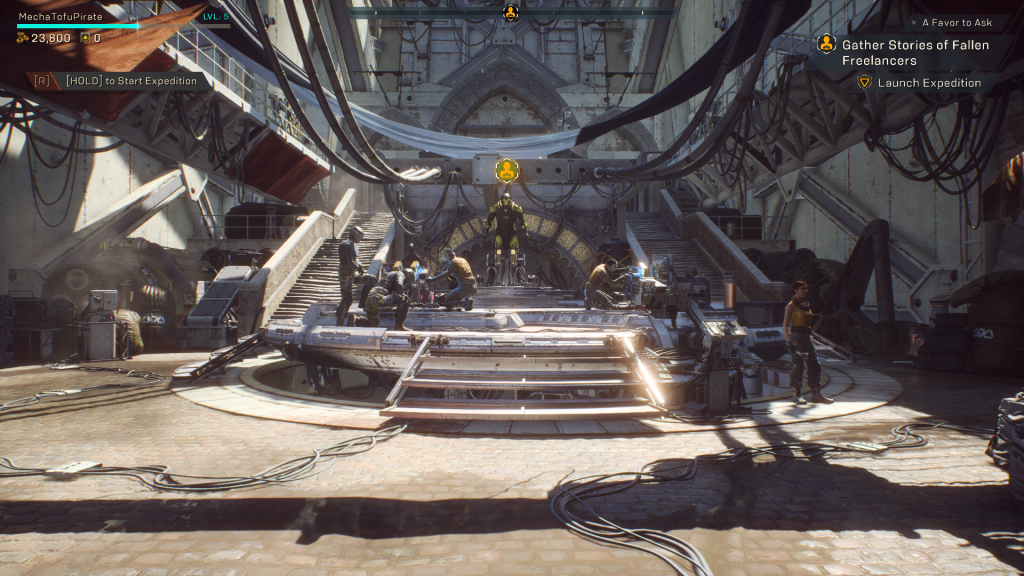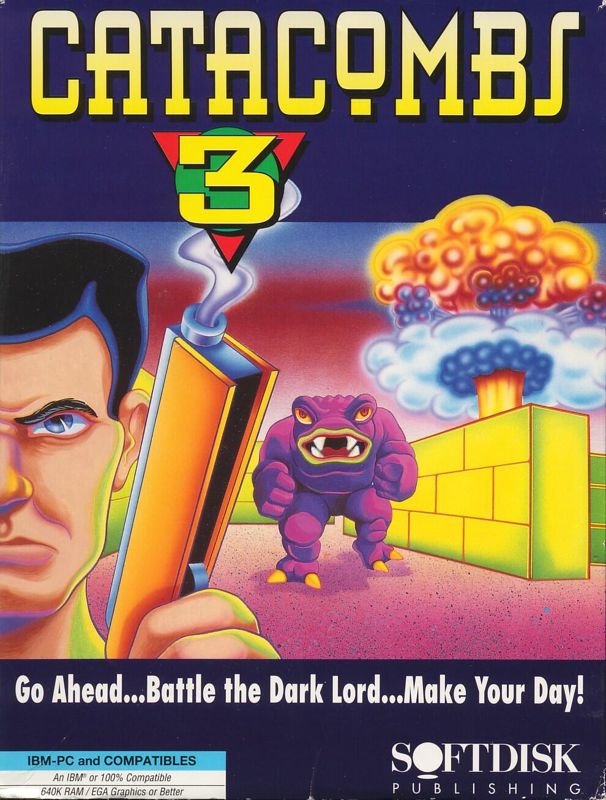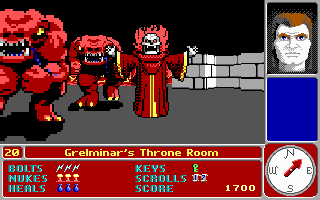If you want to do something nice for my birthday, go get a library card! Already have one? Then go check something out either in person or virtually if your library has streaming services.
Author: mpklamerus
Replayed Super Mario Bros.
Developer: Nintendo
Publisher: Nintendo
Year: 1985
Genre: Platformer

I don’t know man, it’s Super Mario Bros for the NES. I have nothing unique to say about this one but this has replaced Backloggd for me so it’s going here. It’s an important game and I still like playing it, with the exception of the maze in world 7. There.
I guess what I will say is that sometimes it’s fun to go back to a game you’ve played a billion times and really dig into it more if you haven’t already. That Minus World glitch you’ve heard about before? Go in there and actually try it out for yourself. It’s fun to see all the weird stuff in a game that’s been discovered by people who have been playing it over the last 40 years. Maybe check out a rom hack or two. Check out the differences between versions in other countries if they exist. This was part of my recent revisit to lots of old games since I have an emulator setup for the first time in a while, even though I also own this in the original hardware AND it’s accessible to me through the Nintendo Switch. RetroAchievements was what got me to revisit the game and poke at it in weird ways that I usually don’t. It’s hard to make time for this sort of thing when you can take a look at your games backlog and see that there’s a billion things in there, but I think it’s also worth revisiting something you like that you haven’t played in a long time and poking at it in ways that you usually don’t.
Super Mario Bros. is available on the Nintendo library in the Nintendo Switch Online service
Blog Roundup (August 17, 2025)
Not much of an intro this week because I’m tired. I go on vacation tomorrow for a bit and have posts scheduled for then so I can keep up with Blaugust.
Video Games
Em wrote about some highlights at the Glasgow Indie Game Fest
Cybercultural has an article about Multimedia Gulch and the cd-roms they created in 1994.
Lunar Looney writes about how demo discs were pretty rad
Technology
This post lists alternatives for hosting erotic and queer work
erysdren wrote a guide to preserving basically everything on the internet and encouraging you to download things you like if you’ve got the room for it.
Someone put together a list of blog rolls they’re a part of, but it then turns into a really nice list of other curated blogrolls, webrings, and small website directories. Found this one on theTangentSpace
Mike Piontek wrote criticisms of safari 26 and the new liquid glass
I like roundups of blog posts so I’m including this one on dhippo.net. It includes a mention of my post on RetroAchievements, which linked to his post mentioning RetroAchivements. So now there is a chain of posts linking to the same two blogs repeatedly.
Thanks to this post, I am now familiar with iNaturalist and all the local things people are finding in nature.
Dev Logs
Development has resumed on Eldritch 2!
Writing
A new issue of Alocasia! It’s a journal of queer plant-based writing and free, but donations are appreciated.
Photography
Have some nice photos from various blogs of Juanita Bay, a garden, and someone’s vacation in Llandudno in North Wales. You can just post photos on your blog! Maybe I’ll do that after I go on my vacation this week.
Food
Megan put together a very nice list of vegetarian recipe recommendations and a recipe for a cocktail.
Other BIts
The Works of Egan writes about their favorite public media (which includes some of mine too). Consider supporting the ones local to you!
Anthem thoughts
Developer: Bioware
Publisher: EA
Year: 2019
Genre: RPG

Anthem is an online action roleplaying game where you play as Freelancers, basically adventurers in big metal suits with jetpacks, that must stop some evil folks from taking controls of the Anthem of Creation, which is a mysterious force that has created most of the advanced technology in the world. I started playing this one after EA announced the game was going to be shut down for good at the beginning of 2026, however it turns out that the game was no longer for sale and only accessible through EA Play, where it was only available for the next month.
I kinda didn’t know what to think going in. It was my first Bioware game in something like 15 years and I think my first AAA game in a while too, outside of Nintendo’s stuff. Bioware doing multiplayers shooters is also just not what I want from them and why I never bothered with ME3, since at release that relied on you having to play those bits for that best ending or whatever was going on.
The game is a bit of a mess but for the most part I had a good time. The flying and shooting feel great. I don’t know if I’ve played a game with a better jetpack. It was technically very impressive to me too. I think some of the design of things in the world falls a bit flat. None of the designs of things like the suits were really that interesting to me. But the effects and creation of that world look nice when you’re zooming around in a jetpack and the modeling and facial expressions are all well done. I forgot how expensive video games can look since I usually don’t play that many expensive ones, so it’s a weird change for me to play one where you can feel tons of money being dumped into one and for things like famous actors who pop up just to voice a couple lines.

The shooting feels good too. It all feels good! It’s just that it all becomes pretty repetitive. Generally you fly to a place, shoot all the bad guys in an area, and repeat. Sometimes you grab some Important Things in an area and bring them to the glowing thing in the center of a region. This is generally how the missions go. I’m making this all sound kind of awful but I still enjoyed it. I think this is where the “It’s a 7/10 game (complimentary)” thing comes in. I actually think there’s two types of 7/10 games. There’s the kind that are your experimental games, like early 90s French DOS Games that takes lots of fascinating swings that don’t always work, and the other kind being pretty safe games that are kind of messy or boring at times but can still be fun to play. I felt like Anthem falls into the latter. Once you’ve played for a few hours, I feel like you kinda “get it.” But I don’t think it’s necessarily a bad thing. Well, maybe it is if you bought it at full price for $60. But I didn’t mind as a one month of EA Pass thing. Sometimes I just want kind of a mindless shooter that has a nice jetpack.
I can’t really blame people for being critical of it in reviews though. There’s never that much roleplaying that happens or a whole lot to mix it up, which is kinda why people go to Bioware games. Once in a while you do some dialog choices but they aren’t especially interesting and I found some of the characters to be irritating too. The game’s plot at a high level is an interesting idea but it never goes to any directions that I was really into. The small storytelling details are great though. I liked things like the codex and in-game mailbox where you get emails from other people and spam mail. You’ll also find little bits of story by exploring the world and maybe finding little things like a list of passengers on a crashed ship, shopping lists, or a recipe. I loved all of this! It sounds like fluff but this is the kind of stuff that makes the world feel more like a real place. You’ll occasionally overhear bits of conversation between two people while walking around the world, maybe in an alley or hanging out on a balcony, and I wish there was more of this too. The hub world you walked around between missions really could have used more of this to give it more life.
I think I’m frustrated by this game because it never develops a strong enough identity and doesn’t justify being an always live game to me. I think a lot of people would feel very differently if it was a single player game with instanced coop. The game never allows more than four people in the world in an instance and never in the hub area either, so it all feels extremely unnecessary other than to say “Well, EA wanted a live service game so here it is I guess.” There were only a few times where I would come across another player, who would stop for a moment and help me shoot stuff, but that was it. There were times I got to play with friends but again, that could have been handled in a way that doesn’t make this a live service game.
The game was delisted from EA Play yesterday, meaning it’s no longer available to play for me. This is a bizarre decision to me because the game is still playable to people who bought the game until January. Why not let people subscribe to EA Play for the next few months for an exclusive game and make some more money from that while the servers are still up anyway?
My understanding is that the production was a bit of a mess, with a lot of bad decisions being made at the executive level. It’s so unfortunate because you can tell that a lot of care went into this game by the people working on it and were hampered by these bad decisions. There are moments of brilliance that come through when it’s not fighting against all the directions the game was being pulled in during development. I still had fun playing it and it’s so unfortunate that it will no longer be available for folks to play in a few months unless people figure something out in the next few months. I know StopKillingGames is a whole thing but this game came out years before that started and why I think that movement is poorly thought out is a whole other mess.
Anthem is no longer available for sale and not playable anywhere.
RetroAchievements
After seeing this post about it, I’m hooked! I’m probably the last person to know about it but RetroAchievements is basically a service that hooks into a specific set of emulators to let you get little achivements for retro games. Achievements are kinda goofy and maybe a net negative for games, but I like doing this with old games I’ve played a bunch of times before. It’s just fun and goofy to get them for something like Super Mario Bros. My only real complaint is that it’s basically only for console games, when this would be much more exciting to me if it supported DOS and the Amiga. It apparently supports the Apple II but I haven’t been able to get it to work. Which is a shame, because the idea of earning achievements in something like Gabriel Knight 2 is very funny to me and I wish I could do that.
Late Shift thoughts
Developer: CtrlMovie
Publisher: Wales Interactive
Year: 2017
Genre: Interactive Movie

Late Shift is a choose your own path-style game where you play as a student named Matt who forced to help with a heist and must make the correct choices to survive the night. You watch the interactive film and at specific points in the game you make binary choices that lead to different branches. The game features multiple endings with one being the optimal ending.

I found this game incredibly frustrating. It’s well shot and the actors are all great, but nothing else worked for me. The choices often boil down to being a Good Choice and a Bad Choice with it feeling like a coin flip, and if you chose poorly, you are eventually given a bad ending. This normally wouldn’t be that big of an issue but if you want to go back to redo that choice, you must restart the game and you cannot skip previously seen scenes. Many other choices do not matter at all. Playthroughs also happen to be pretty long, making it a chore to replay. If you want to redo a choice, you have to rewatch up to an hour of the game again just to try the other option. The game also suffers from some poor dialog that would take me out of the game. If you’re looking to play an interactive movie, there’s plenty of better options. Some of the other games by this publisher, Wales Interactive, are worth considering over this game too.
Late Shift is available on a variety of platforms, linked to on the publisher’s site.
The Ann Arbor District Library Summer Game 2025: GOTY
Developer: Ann Arbor District Library
Publisher: Ann Arbor District Library
Year: 2025

With the Ann Arbor District Library Summer Game basically nearing the end for this year, I feel very comfortable saying this is my Game of the Year. If you don’t know, the Summer Game is a yearly event organized by the Ann Arbor District Library where you can enter codes for points, usually scattered around the city and various branches of the library, along with logging your reading and participating in events and online games on the library’s website. You can then redeem the points for prizes. NPR recently did a very good article about the history of the Summer Game and goes into more detail on what the Summer Game is.
I’ve mentioned the Summer Game on here a few times before but with this being the first time I actually participated in it, I cannot get over what an incredible experience it has been. My kids and I had so much fun finding codes around the city and it encouraged them to read more. You can’t beat that! It also encouraged me to go to more library events, which I always have a great time at. I guess it’s a little bit of a cheat to say that something like this is better than Video Games, but technically the website does have video games that I played for points so I will count it. A previous year I considered the Pikmin mobile game to be my GOTY, not because it’s an amazing and well designed game, but it helped me learn about paths I could walk on near my house and when something improves my life that much, it kinda wins by default. Maybe I just need more edutainment games as an adult.
Morph Girl
Developer: Autumn Knight
Publisher: Autumn Knight
Year: 2017
Genre: Adventure

Morph Girl is an FMV game inspired by 90/00’s Japanese horror movies such as Ringu. You play as Elana, a widow who is unable to move on following the loss of her wife to cancer one year ago. A supernatural being resembling her wife begins to force itself into her daily life and the decisions you make during the game determine if she embraces or rejects the creature. It’s the first game by Autumn Knight, who later worked on D’Avekki’s game Dark Nights with Poe and Monroe as an editor and game tester.

It maybe lacks the production values that a FMV game by a larger studio would have but it’s an interesting game and I enjoyed the writing. Sadly it’s rare for queer relationships to be depicted in FMV games so it was nice to see a game entirely about one. I was confused by how some of the choices led to various endings. I did get a little frustrated by the inability to skip previously seen scenes too, especially in a game that needs multiple playthroughs to see all the endings, but I appreciated that the playthroughs were only 30 minutes long so it was easy to see it all and repeat scenes weren’t a big deal. Despite my criticisms, I had a good time with the game and appreciate that it explores themes that are unfortunately rarely seen in adventure games.
Review: Catacomb 3-D
Developer: iD Software
Publisher: Softdisk
Year: 1991
Genre: FPS

Catacomb 3-D is the third game in the Catacomb series and the first in the series to be a first person shooter. I feel like people sometimes claim it’s the first FPS, but that’s incorrect and it’s not even the first FPS by iD Software. In this game you play as a wizard named Petton Everhail and must explore a series of catacombs to defeat the evil lich Nemesis and rescue your friend Grelminar. Different releases of the game switch the names around but that makes no sense to me and the later games refer to the lich as Nemesis so that’s what I’m sticking with.
Today the game is pretty simplistic compared to even FPS that would come out a few years later. You wander around maze-like levels and shoot fireballs at a variety of monsters that you would expect to see in a fantasy setting. The fireball is the only weapon you have, but you can pick up two different powerup types that shoot multiple fireballs at the same time but in different patterns. It still has a little bit of a rpg influence since you pick up healing potions that you choose to use when you think you need them.

Even though it’s dated, I still had fun. It’s very interesting from a games history perspective and I liked seeing what id software dropped and what they carried to their later FPS. Walls can be destroyed by shooting at them, adding more of an exploration element to this game compared to Doom. There’s also some puzzles that you need to figure out from reading scrolls. I think the enemies are charming too. I really enjoyed the pixel art for them and their animations.
I would recommend the CatacombGL source port if you want to check it out. It adds a lot of nice features like widescreen and smoother movement.
Catacomb 3-D is available on GOG.
Blog Roundup (August 10, 2025)
It’s still Blaugust which means my RSS feed reader is still packed with stuff to read all the time. I think that’s pretty nice. To continue my trend of Library Posting, I picked up more prizes from the Ann Arbor Summer Game yesterday, so now I finally have an AADL shirt with another one or two on the way. If you like any of these blogs, add them to your RSS feed reader. I use Inoreader but there’s plenty of other good ones too.
Video Games
I think the brief description of RetroAchivements in here made me want to give it a try.
Folks, you need to boycott Microsoft. Stop buying their games, stop covering them on your games outlets, etc. It’s 2025 Year of the Linux Desktop (unironically).
I share Rob’s feelings on why the Ludocene app is kinda goofy.
I love to see blogs highlighting cool stuff made in Decker.
Syl highlights some nice small games.
I think this was a nice tribute to Roberta Vaughan, a beloved member of the adventure game community.
I really enjoyed this review of Ultimate’s game Underwurlde. Unfortunately, every time I hear about the company Ultimate I just think about how their full name is Ultimate Play the Game and wonder how it’s supposed to be said. Is it “Ultimate (pause) Play the Game” or do you say it all without the pause?
I should also probably play Starcross sometime, Infocom’s 1982 sci-fi text adventure.
The Video Game History Foundation acquired Computer Entertainer magazine, which ran from 1982-1990, and put it into the Creative Commons.
Technology
I’ve gotten into more self hosting and media server stuff over the last couple years and I’m always excited to see more recommendations for Homelab software
Music
Garrett Schumann wrote about local Ann Arbor music legend Fred Thomas
Vinzenz did a song-by-song breakdown of their great new album A Clearing. Also consider checking out their games.
Dev Logs
I’m just happy to see progress being made on Death Ray Manta 2.
TTRPG writers can do dev logs too and I just like hearing about what Dinoberry Press is working on.
Other Stuff
Another link to local stuff, I enjoyed this history of the oldest active train station in the United States, located in Jackson, Michigan.
